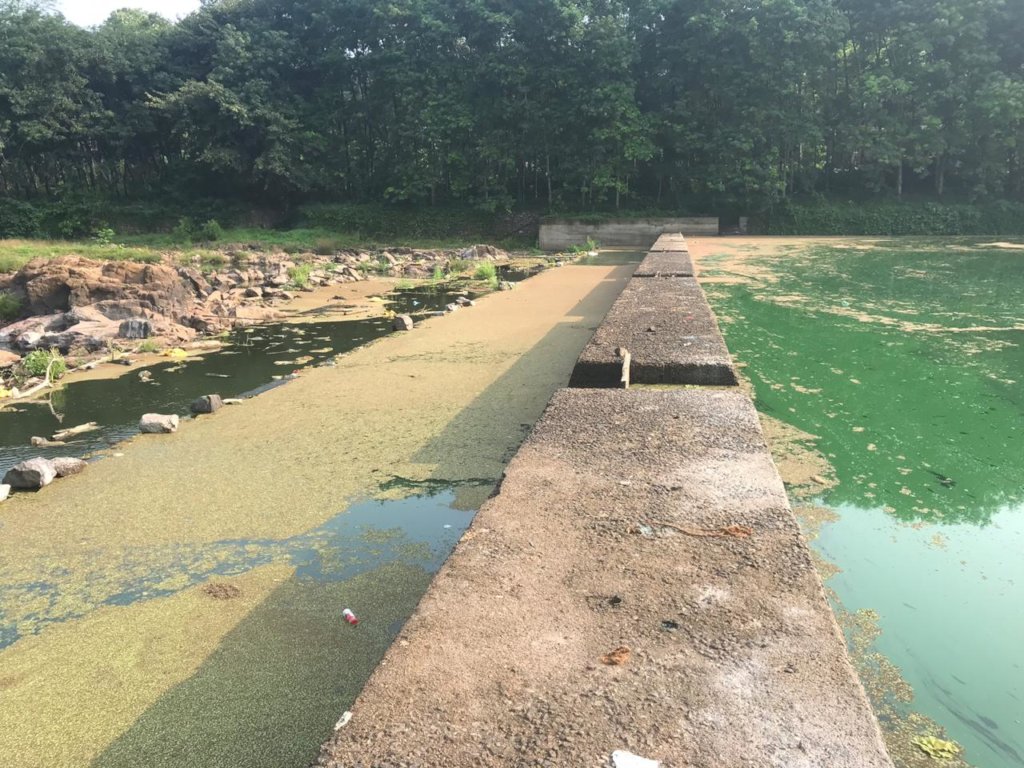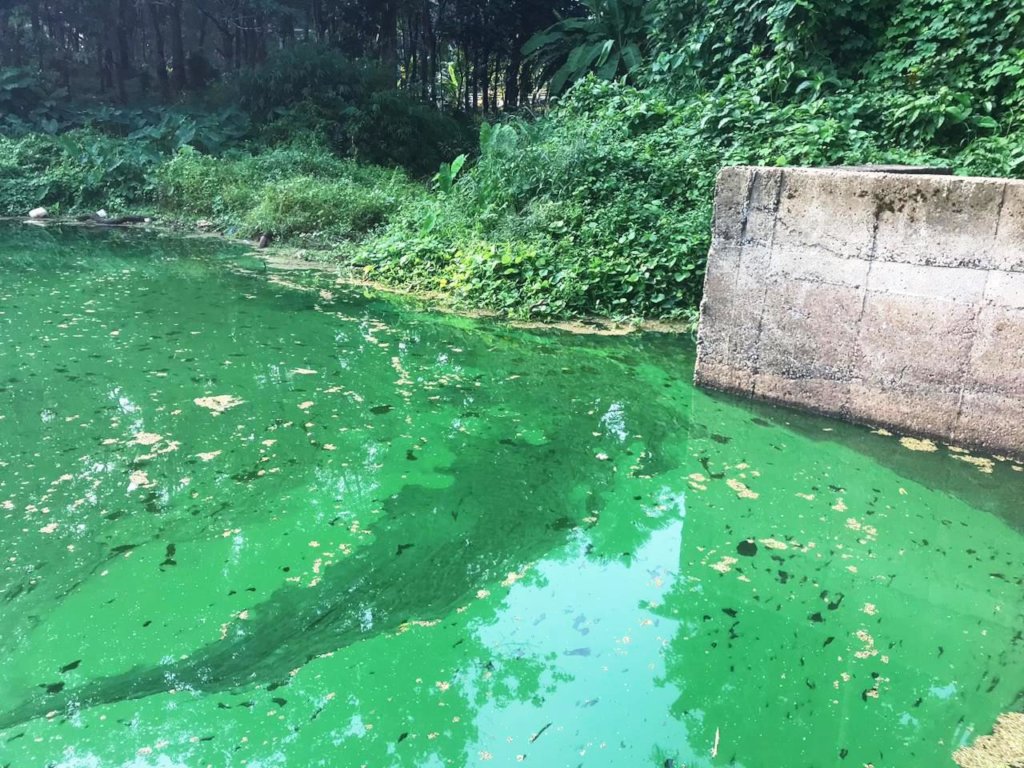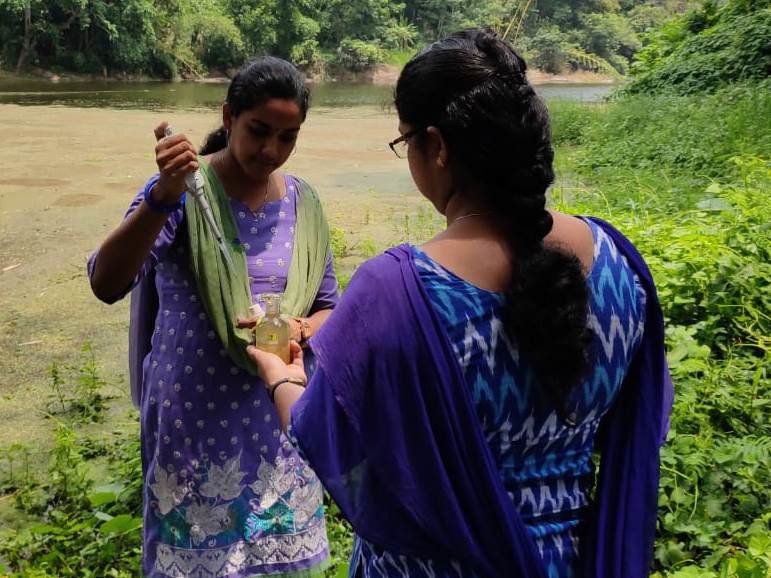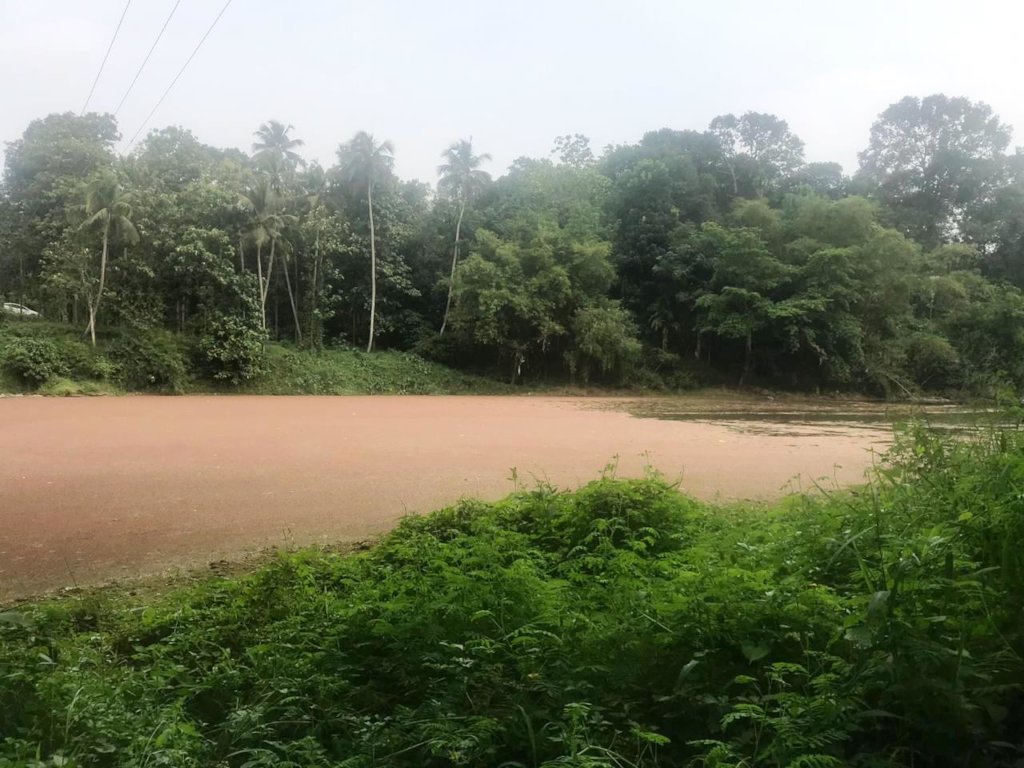By Leena Fernandez | Project Leader
TIES was called out in mid-May 2019 to investigate the aftermath of a thick green scum that appeared in the Manimala river from Karimpukayam check dam to Cheruvally Pallyppadi in Kottayam, Kerala. This seemed to be algal bloom and was first noticed about in April 2019 by residents of the area and suspected to be caused by industrial waste from a nearby rubber factory. The thick viscous green scum covered a 2 km stretch of the river. By the time TIES was appraised of this situation, the pre monsoon showers had already diluted the waste and washed it downstream, but the original location was marked by dead algae.
Microbiologists from TIES collected samples of water from this point and from three other points further downstream to identify the contaminant and extent of contamination. Manalalil (2.5 km downstream from Karimbukayyam Check dam), Thayyikkayyam (1 km downstream form Manalalil), Cheruvalli Pallipady (2 km downstream from Thayikkayam).
The collected water samples were tested for physical and biological properties including pH, conductivity, total dissolved solids (TDS), salinity, chlorine levels, total hardness, calcium & magnesium & iron levels, dissolved oxygen, presence of E. coli, etc.
There were high levels of oil and grease present in the samples and phosphate, fluoride and iron levels were also elevated, indicating the presence of industrial effluent, possibly sludge from rubber processing units beside the river. The total dissolved oxygen level was very low while biological oxygen demand (BOD) was high. This is bound to negatively impact aquatic fauna and sure enough, organic carbon levels were high as well. Comparing test results from all points along the river, it was seen that the chemical components were deceasing downstream while oil and organic carbon levels increased.
The results also showed that coliform bacteria including E.coli was found in very high levels indicating contamination from septic waste. Rubber sludge also can contribute to E.coli presence. Currently, there is no treatment system for domestic sewage and the soak pits allow percolation of black water into the river. This is a cause for concern as the water from the Manimala river is pumped into homes and is freely used by residents for bathing, cleaning, and washing clothes etc. For the past month, the residents had been complaining of itchy skin and a foul smell in the water, most likely related to the sudden inflow of industrial waste. People have since even stopped bathing livestock (cows and buffaloes) in this water due to the appearance of pale patches on the animals’ skin. The river water is also pumped into neighboring lands for purposes other than consumption, such as irrigation.
Results of these tests have been shared with the residents of the area. They were informed that had these tests been conducted when the bloom first occurred, it would have been much more conclusive as to identifying the point source of pollution.
The problem of untreated domestic waste can be handled by the installation of a small sewage treatment plant or a bio-gas plant in the area. Currently, there is an apprehension among the residents about odors and possibility of disease stemming from collecting and storing human waste close to their homes. These apprehensions can only be cleared by intensive awareness campaigns followed by installing a small sewage treatment or bio-gas plant that will put their fears to rest.
Lack of waste management is the biggest danger that the Manimala river faces. Your support can help us reach out to the community and show them that managing and treating waste at the domestic level is not as daunting a task as it seems. We will be starting with awareness campaigns and moving on to implementing waste management solutions.
The Manimala River is stunningly beautiful, with banks rich with brightly colored birds and insects and waters home to a wide variety of aquatic flora and fauna, some of which are not found anywhere else in India or the world. If the community does not engage and check the flow of pollutants into the river, this vibrant ecosystem will gradually turn into a dark and silent river of waste.
Project reports on GlobalGiving are posted directly to globalgiving.org by Project Leaders as they are completed, generally every 3-4 months. To protect the integrity of these documents, GlobalGiving does not alter them; therefore you may find some language or formatting issues.
If you donate to this project or have donated to this project, you can receive an email when this project posts a report. You can also subscribe for reports without donating.
Support this important cause by creating a personalized fundraising page.
Start a Fundraiser


